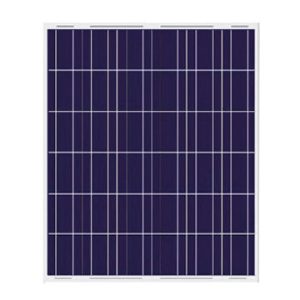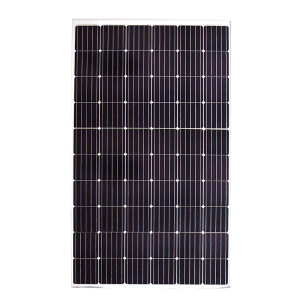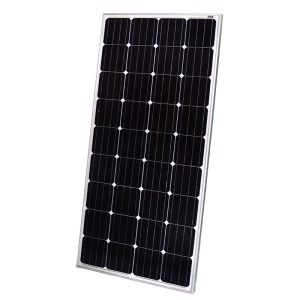The adoption of solar power continues to accelerate globally, empowering homes and businesses to utilize clean, renewable energy harnessed from the sun. As solar technology advances and costs decline, larger solar arrays are becoming an increasingly viable option to make a significant dent in electricity consumption. This article provides a comprehensive overview of 40 kilowatt (kW) solar systems – from key components to installation considerations, costs and benefits, and leading players in the marketplace.
A Primer on Photovoltaic Solar Power
At its core, a solar electric or photovoltaic (PV) system converts sunlight into usable alternating current (AC) electricity. This is achieved via interconnected solar panels consisting of photovoltaic cells made from materials like silicon, which release electrons when exposed to sunlight. The PV cells are wired together into solar modules, which are then connected to form solar arrays.
The generated direct current (DC) electricity is fed through inverters to transform it into usable AC power. Excess energy can be stored in batteries or fed back into the grid via net metering programs with local utility companies. The modular nature of solar lends itself well to scalable applications from small rooftop setups to large solar farms operated by power companies.
40 kW translates to 40,000 watts, indicating the total estimated power output capacity of the solar array under ideal conditions. This would require about 150 panels rated around 270 watts each, covering roughly 1000 square feet. The actual output would vary based on factors like hours of peak sunlight. An appropriately sized 40 kW system can effectively eliminate or drastically reduce grid electricity usage for many residential and commercial sites.
What Makes Up a Complete 40 kW Solar Electric System?
While solar panels naturally form the centerpiece, several critical components work in tandem to enable the system’s functionality. Here’s an overview:
Solar Modules
As outlined earlier, crystalline silicon solar panels like mono and multi-crystalline are generally used, with higher efficiency monocrystalline panels being increasingly adopted. Output, dimensions, weight and durability vary by manufacturer and model. Most panels for utility scale systems have power ratings between 250-400 watts.
Inverters
Inverters play a vital role in converting the solar array’s DC output into usable 120/240 V AC power to run lights, appliances, devices and more. String inverters are commonly used for large systems, taking DC input from multiple panels wired in series (strings). Microinverters can also be used for individual panels. Inverter power ratings scale according to system size, with central inverters used for utility-scale solar farms.
Mounting Equipment
Proper racking and mounting equipment securely anchors solar modules while maintaining optimal orientation. Rooftop systems may use rails and clamps, while ground mounts utilize sturdy poles anchored in concrete foundations. Tilt angle, wind/snow load capacity and compliance with local building codes are key considerations.
Cables and Wiring
Specialized cabling and wiring properly routes the DC electricity from the arrays via combiner boxes before feeding it into the inverters. These components must be adequately rated to handle both system voltage and weather exposure over decades. Proper installation is crucial.
Monitoring System
A solar monitoring platform enables remote oversight of system performance metrics like real-time/historical production data, alerts and analytics. Cloud-based monitoring provides access via computer or mobile apps. This allows for prompt issue diagnosis and resolution to maximize uptime.
Key Factors Influencing 40 kW Solar System Design
Successfully planning and executing a 40 kW solar installation requires careful consideration of the following aspects:
Location and Sun Exposure
The amount of daily and annual sunlight the system receives has a direct impact on its productivity. Areas like the Sun Belt of the U.S. offer more solar resource potential compared to overcast regions. Within a site, the panels should be situated in unshaded locations facing true south (northern hemisphere) at latitude-specific tilt angles.
Energy Usage Offset Potential
A properly designed 40 kW solar system in a favorable location can reliably generate 30,000 – 50,000 kilowatt hours (kWh) per year. This solar output potential aligns well with the annual energy consumption of many residential settings. For commercial sites like manufacturing facilities, solar arrays of this size make noticeable dents in much larger energy loads across daily operations.
Rooftop vs. Ground Mount
Solar arrays can be installed on rooftops or ground mounted on poles. While rooftops maximize space utilization, they must account for structural load capacity, roof age/warranties, and panel accessibility for cleaning/maintenance. Ground mounts avoid these constraints but require adequate vacant land and tend to cost more.
System Components
Mono vs. polycrystalline panels, types of inverters, inclusion of battery storage etc. impact system performance and costs. Grid-tied systems feed excess power to the grid while off-grid systems require batteries and charge controllers to independently meet energy demand. These design choices are informed by site-specific factors and owner priorities.
Cost Analysis: Upfront Investment and Long-Term Savings
Transitioning to solar power represents a significant upfront investment that pays steady dividends over decades in the form of reduced or eliminated electricity bills. For a 40 kW commercial solar system, average nationwide installed costs range from $1.20 – $1.50 per Watt DC, as per the latest Solar Energy Industries Association (SEIA) data. This translates to $48,000 – $60,000 before incentives. System costs vary across states based on labor/permitting costs, import tariffs, etc.
After the 30% federal Investment Tax Credit (ITC), accelerated depreciation, additional state/utility incentives like rebates and performance-based incentives, etc., out-of-pocket costs drop to around $25,000 – $35,000. The system then offsets electricity purchases from the grid. SEIA estimates that commercial solar arrays in America typically achieve payback within 4-6 years while warranties ensure decades of low-cost solar power.
Properly sited solar arrays can also enhance property value by demonstrating environmental stewardship and lowering operating expenses. Escalating utility rates make the lifetime savings potential even more appealing.
Key Players in the U.S. Solar Marketplace
The U.S. solar industry has witnessed exponential growth over the past decade. Here are some of the leading manufacturers and equipment providers:
Solar Module Manufacturers: JinkoSolar, Risen Energy, Canadian Solar, First Solar, LONGi Solar, Qcells, REC Solar etc.
Inverter Equipment Suppliers: SolarEdge, Enphase Energy, SMA Solar, ABB, Fronius, Delta Group etc.
National installers like SunPower, Baker Electric Solar, PosiGen etc. along with regional solar contractors offer turnkey system design, permitting, installation and maintenance services catered to local markets. Tesla’s solar division also continues to expand its market footprint.
Conclusion and Next Steps
The favorable economics, environmental benefits, and resilience against grid supply vulnerabilities make commercial solar arrays like 40 kW systems compelling investments. To determine if solar power is right for your property, consult with qualified solar contractors in your region to schedule site assessments and develop project proposals tailored to your operational requirements. Be sure to inquire about available federal, state and utility incentives to maximize savings. With solar already cheaper than fossil fuels in most U.S. states, the sun is shining bright on the profitability potential of deploying solar. Reach out to Solar Exporters today to discuss your solar project!



